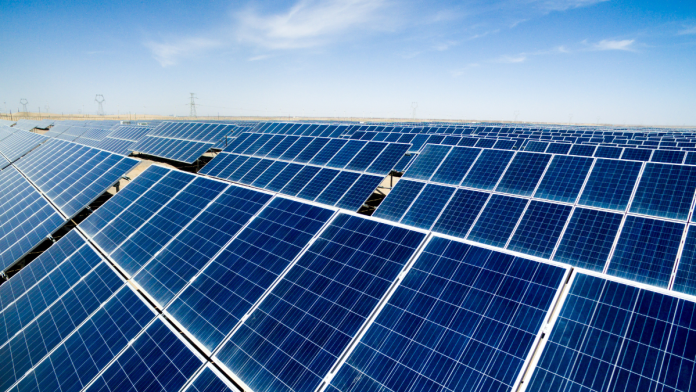Kenya’s National Energy Policy 2025–2034 sets a bold target: universal electricity and clean cooking by 2030 while steering the country toward net-zero pathways. The plan leans on Kenya’s unmatched geothermal resource and a large portfolio of wind, hydro and solar but whether the policy becomes a model for Africa depends on financing, grid upgrades and fast, accountable implementation.
The new policy combines clear national targets with the Kenya Energy Transition & Investment Plan (ETIP), which estimates roughly USD 600 billion of investment needs by 2050 a financing scale that requires public funds, concessional climate finance and private capital to align. If Kenya can close that gap and modernize its grid, it could become the first African country to claim near-universal clean power; if not, the plan will remain an ambitious blueprint.
What the Policy Does
The National Energy Policy 2025–2034, published by the Ministry of Energy, updates sector goals and governance procedures: integrated national energy planning, stronger public participation, streamlined licensing and explicit targets for clean cooking, storage, green hydrogen and e-mobility. The policy timeframe (2025–2034) aligns short-term electrification goals (2030) with longer ETIP horizons to 2050.
The Technical Backbone
Kenya already sources roughly 90% of its electricity from renewables, with geothermal supplying the largest share the resource provides baseload power that other African markets lack. Ongoing projects at Olkaria and Menengai are central: new KenGen capacity is expected this decade, strengthening the baseload and reducing reliance on costly thermal plants.
Financing and Investment Procedures
ETIP models estimate USD 600 billion investment needs through 2050, with power and transport accounting for the bulk. The policy sets procedural steps to attract capital:
- Clear investment pipelines
- De-risking instruments
- Public-private partnership (PPP) frameworks
- Coordinated county-level planning
Experts warn these reforms must be paired with credible project bankability and donor commitments to unlock large private flows.
Case Study — Olkaria Geothermal Expansion
Olkaria’s phased expansion shows how policy meets delivery: state and private actors have steadily added geothermal capacity, with new units expected to deliver tens of megawatts this decade.
This project is a test of whether Kenya can translate policy ambition into real, bankable outcomes. It also highlights how public utilities, IPPs, and development finance can successfully collaborate.
Social and Climate Co-Benefits
If implemented, the policy promises faster rural electrification, industrial opportunities such as green hydrogen and fertilizer production, jobs in construction and operations, and major health gains from scaled clean-cooking adoption.
The government’s National Cooking Transition Strategy lays out a roadmap toward universal clean cooking, targeting millions of households that still rely on biomass and kerosene.
Risks and Constraints
Despite optimism, major risks could stall progress:
- Financing gap :heavy dependence on concessional funds and international donors.
- Grid constraints :large investments in transmission and distribution are required.
- Supply-chain and skills shortages :especially for solar, battery storage, and maintenance.
- Political trade-offs :competing interests in oil and gas exploration could slow renewables.
Analysts argue Kenya must carefully sequence its efforts, prioritizing grid resilience, clean cooking, and bankable geothermal projects before scaling into advanced sectors like green hydrogen.
Also read: How Electric Cooking and EVs Are Driving Rising Power Demand
Frequently Asked Questions (FAQs)
- What is Kenya’s new clean energy plan?
Kenya’s new clean energy plan is a government-led policy framework that prioritizes renewable energy sources such as geothermal, wind, solar, and hydropower to achieve universal electricity access while reducing reliance on fossil fuels. - How much of Kenya’s electricity already comes from clean energy?
Currently, about 85–90% of Kenya’s electricity is generated from renewable sources, making it one of the greenest grids in Africa and globally. - What is the goal of Kenya’s new energy policy?
The policy aims to achieve universal electricity access by 2030 while ensuring that all new power generation comes from renewable sources, positioning Kenya as Africa’s clean energy leader. - How will rural communities benefit from this plan?
The policy promotes decentralized solutions such as mini-grids, solar home systems, and community-based wind and hydro projects, directly targeting rural areas that are often excluded from the national grid. - Why is Kenya’s plan significant for Africa?
If successful, Kenya will become the first African country to provide universal access to electricity entirely through clean energy, serving as a model for other nations facing similar energy challenges. - What challenges could slow down Kenya’s clean energy transition?
Key challenges include financing large-scale projects, upgrading grid infrastructure, ensuring affordable electricity tariffs, and managing political and economic uncertainties. - How does Kenya’s plan compare to global clean energy efforts?
Kenya is ahead of many developing nations, with renewables making up nearly 90% of its electricity mix—far higher than the global average of 29%. Its success could position Africa as a leader in sustainable power generation. - What opportunities does the plan create for investors?
The new energy plan opens up opportunities in renewable infrastructure, energy storage, smart grids, electric mobility, and off-grid solar solutions. International and local investors are expected to play a crucial role in funding these projects. - Can Kenya realistically achieve 100% clean energy access?
While ambitious, the goal is feasible given Kenya’s strong renewable resource base and government commitment. However, success depends on consistent investment, policy enforcement, and addressing affordability for low-income households. - What does this mean for Africa’s energy future?
Kenya’s success could prove that universal clean energy access is achievable in Africa, potentially influencing regional policies and accelerating the continent’s green energy transition.



